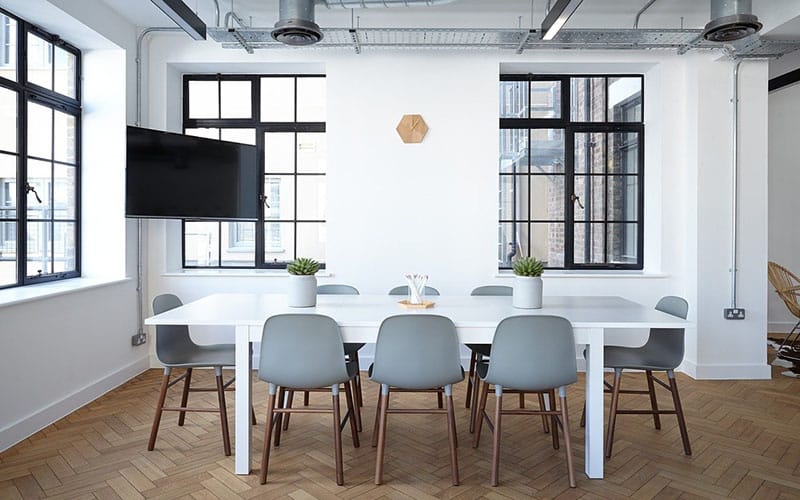Water damage is a nightmare for homeowners, but it can be even more of a problem for businesses. Commercial water damage is a real thing, and it can result in a lot of lost business if not addressed on time.
Below, we’ll mention the most common causes of water damage in Utah commercial buildings and the steps you can take to repair the damage.
Causes of Commercial Water Damage
Your commercial property is not just at risk for the usual list of potential leak and flood threats that face the average home, but also the following:
1. Leaks from the Roof
If your office comprises a whole building or the top floor in a building, be wary of roof leaks. Any leaks in the roof can cause water buildup in your property.
2. Broken Equipment or Appliances
Your business may have appliances or equipment that require water. Sinks, public restrooms, and water tanks all have a minimal risk of causing water damage or flooding if not correctly looked after. Faulty plumbing or water storage in places that can cause condensation can help create the perfect breeding ground for mold and standing water.
3. Damaged HVAC System
Your HVAC system helps make your commercial space comfortable, but it can also cause water damage. Whether these systems have leaking pipes or are just faulty at regulating the correct temperature, they may not keep the environment comfortable and dry. Rather, they could have the opposite effect.
4. Broken Sprinkler Systems
When these systems go awry, you could end up with all kinds of water issues that compromise your commercial facility.
5. Natural Disasters
Finally, your business could be faced with devastating natural disasters. Even when you have everything in control, nature can still take its toll. Whether it’s a particularly fierce storm that suddenly damages your roof or windows, or a flash flood, there are many ways that water damage can happen without warning.
What to Look for With Water Damage
Assuming you have suffered a leak or flood due to one or more of the above causes, you will need to assess how bad the damage is. There will be little you can realistically do yourself in some cases, such as with a deep flash flood. If your premises have been under inches or feet of water, the damage will likely be extensive. Your entire floor, and possibly the building’s foundation, will be damaged or warped and in need of a total overhaul. For this, the only option will be to contact your insurance provider and a professional to bring everything back to working order.
If, however, you are looking at only a patch of water damage or a large leak, there may be ways to orchestrate a DIY fix. Your first step will be to find the source of the water. If there is a clear trail, such as a drip or small stream, you can follow that to find out what needs to be repaired. If this happens to be your HVAC or sprinkler systems, call the team that installed or maintains them. You do not want to risk further damage to these systems.
In the case of leaking windows, doors, or roofs, the damage will likely be much less significant. Usually, these leaks are slow and can be caught before too much damage occurs. What you need to keep in mind is the material of the damaged area. Wood, linoleum, drywall, or carpeted floors absorb water more than tiles or stone. This absorption can hang around longer and lead to mold or rot in the material, making it harder to clean up. Always remember that there may be more damage than you can see.
Tips to Repair Water Damage
If you think you can tackle the water damage on your own, here are our best DIY tips:
- Dry the area thoroughly – for harder, less absorbent surfaces, this can be achieved with mops and towels. If the area has carpet, wood, or drywall, you will find a wet vacuum much more effective at getting all the deeper and soaked-in moisture back out.
- Reduce excess moisture in the room – a dehumidifier will help draw any remaining humidity out of the room and reduce the chance that spores and mold will settle.
- Remove any wet patches of carpet or flooring – if you have had to wait, or didn’t catch the water soon enough, then the damaged area may not be salvageable. In this case, the damaged area will need to be removed or replaced so that you can see whether any further damage has occurred. This is also true of any furniture that may have been affected.
If you’ve experienced severe cases of flooding, your best bet is to work with a Utah flood restoration company. Water damage repair specialists will arrive on your premises with special equipment to remove excess standing water, dry the damp area, and repair the damage to your property. Always work with companies whose cleanup methods are safe and efficient, as inexperienced professionals can do more harm than good.
We also recommend documenting the damage and cleanup process. This is helpful if you’re handling the situation yourself but vital if you’re going through your insurance. Keeping track of the damage to your commercial property is important for ensuring that your policy covers everything. Record the damage with time-stamped photographs (and meter readings) and note every piece of furniture or inventory affected.
Floods are a frustrating setback, but there’s always a way forward with the proper intervention. Need help with flood restoration in Utah? Call the Disaster Company at 801-998-2953.

